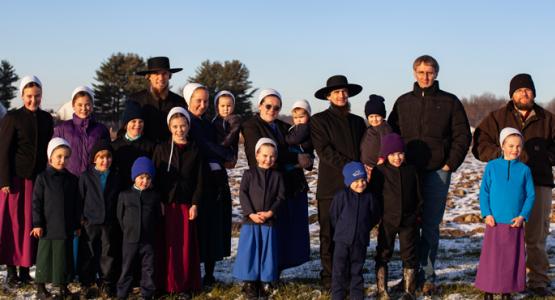
Amish to Adventist
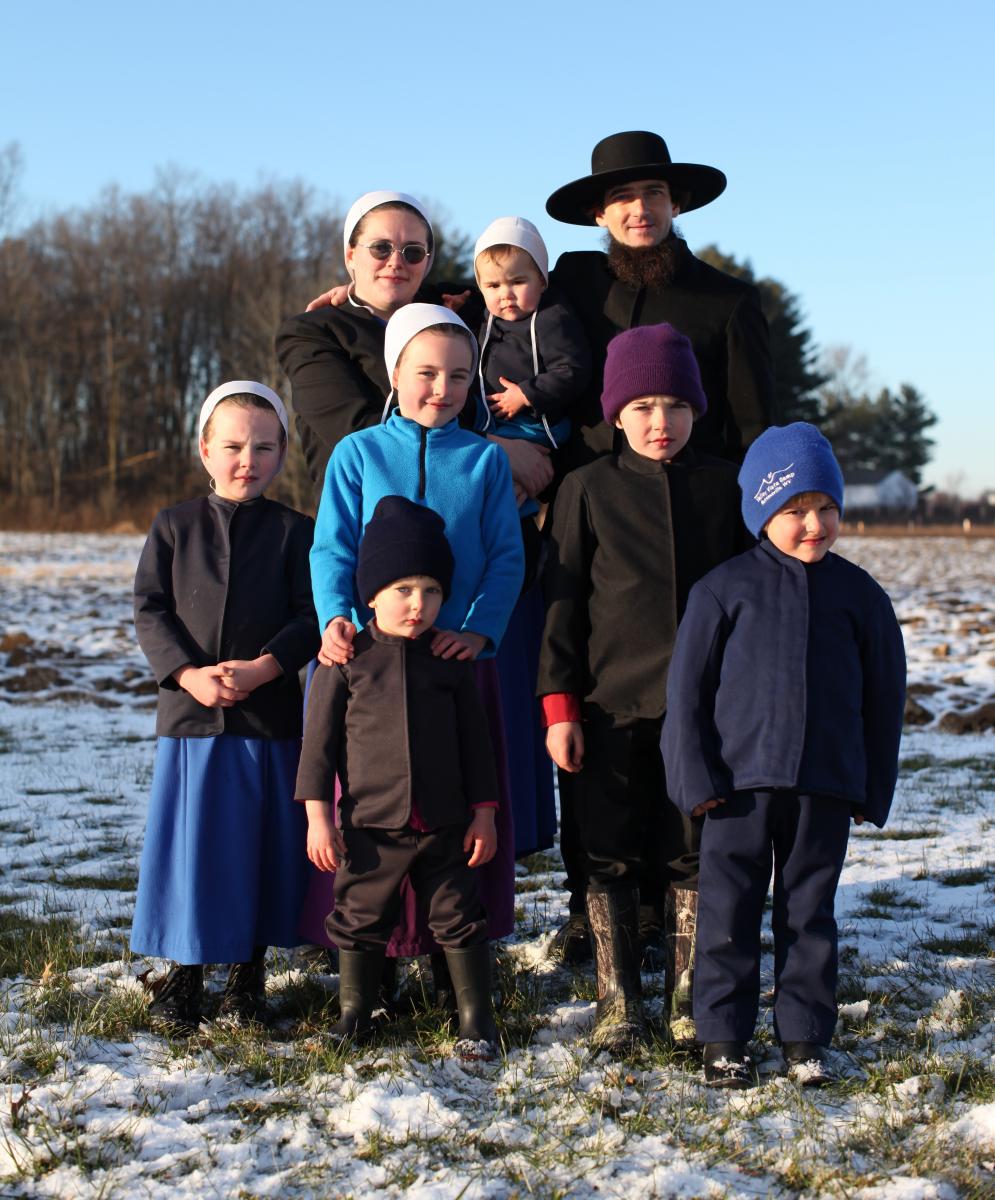 Story by Hannah Luttrell / Photos by Michael McElroy
Story by Hannah Luttrell / Photos by Michael McElroy
I want to be excommunicated.” Delila Glick looked straight at her bishop, her steady voice belying the twinge of nervousness she felt inside. From the outside, Glick looked like any typical Amish woman, her waist-length hair neatly twisted up in a bun and tucked beneath a white prayer covering, and her long, full skirt lightly brushing the floor of the bishop’s house.
Yet, what she said was anything but typical. Being excommunicated or shunned from the Amish community was a severe punishment used to pressure a wayward member to repent and return, and asking for such a sentence was definitely not a common occurrence.
“Why would you want that?” the bishop frowned.
“I don’t understand the way you are treating my husband,” Glick explained. “I feel the same way he does, and I want to be shunned as well.” Her husband, John, sat quietly next to Delila, silenced by his status as a shunned church member.
Several weeks earlier, the church had caught John using power tools and a Bobcat® to help a friend. That went directly against the Ordnung, or rules of their strict Swartzentruber Amish sect. The only excuse for using power tools, cars, phones and the like was if someone’s life was in immediate danger. “You’re trying to worship two gods: the rules of the church and now the world by using these forbidden equipment,” the bishop had said, inadvertently revealing the level to which he had elevated his church.
The sentence from the council was swift: six weeks of excommunication—no business or social interaction with any Amish church member. For any Amish living within the Lodi settlement in Ohio, the community was their entire world. Excommunication meant no buying or selling of any goods or services, no social gatherings, not even a meal with any member, including their own family. At church on a Sunday, the council told John to go home, but his wife and children were to remain at church.
As John drove his horse and buggy home alone, he never felt so low in his life. The bishop had told John that he could not be forgiven after willfully “sinning,” despite knowing the church rules. “If I am that bad,” thought John, “then why should I be with my wife or kids ever?” The weight of the condemnation bearing down on his soul drove John to consider taking his own life. He wasn’t sure if he could still be saved if he did that, so once he arrived home, he grabbed his German Bible and started reading, searching for a passage that would give God the “right” to let him kill himself.
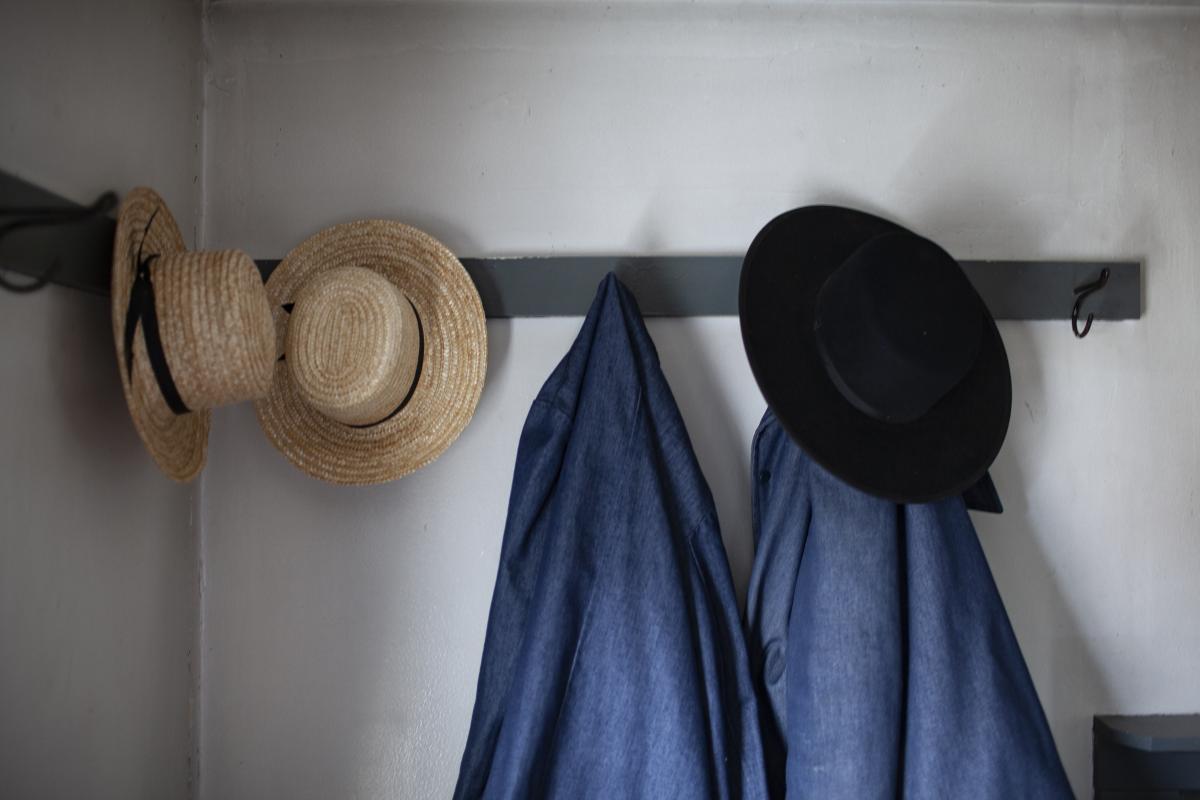 Yet, as John combed the pages of the gospels, he found anything but that. Instead, he found relief, joy and truth. What he read not only went against a lot of his long-held beliefs, but also showed that the ways of his bishop and church did not match up with the Bible. He shared his discoveries with Delila, and together they began to pray and study the Bible. Initially hesitant, Delila knew that if they continued on this path, they would soon be leaving their family, friends and the only world they had ever known.
Yet, as John combed the pages of the gospels, he found anything but that. Instead, he found relief, joy and truth. What he read not only went against a lot of his long-held beliefs, but also showed that the ways of his bishop and church did not match up with the Bible. He shared his discoveries with Delila, and together they began to pray and study the Bible. Initially hesitant, Delila knew that if they continued on this path, they would soon be leaving their family, friends and the only world they had ever known.
Nonetheless, as they continued to study, Delila realized that Jesus had to be first in her life. He was her source of comfort—not her parents, her siblings or even her community. As they neared the end of the six weeks of excommunication and of studying the Bible together, they knew that, despite the consequences, they would have to leave the Amish church—permanently.
“You need to talk to Andy,” remarked John’s cousin, after hearing his dilemma. Andy Weaver was a former Amish church member with whom John had never quite seen eye to eye on his beliefs. But that was before. Just one day after John’s official six weeks of banishment was over and he was reinstated back into the Amish church, the Glicks took a huge risk by parking their buggy behind Andy’s barn and sneaking into his house for a Bible study. Within a few months, John and Delila joined Weaver and his wife, Naomi, not only in the Bann—or the state of permanent excommunication from the Amish church—but also in the Amish Seventh-day Adventist worship community in West Salem.
The Glicks JourneyJohn had always assumed that anyone who didn’t dress like the Amish was “of the world.” But at his first church service at West Salem Mission, when he saw the “English-dressed” worshippers pour out their hearts to God in sincere, heartfelt prayer, John broke down and cried. Seeing people who looked so different from him and yet believed so strongly in the Word of God made him realize just how many of his past assumptions needed changing.
“People think I left the Amish church to get more pleasure, more materials,” remarks John. “In some ways, it’s partly true—I did want a truck, a phone and a Bobcat®. But now I know I don’t even need all that—all I need is Jesus. Actually, if I wanted pleasure, I would go back to being Amish because there is nothing in this world outside of God that can give more pleasure than being with family. But as much as I am homesick for my family, I know I can’t put family above the Word of God.”
For Delila, being shunned by her family of origin was the hardest part about leaving. Her family had always been close, and, even as adults, the times her parents and 13 siblings spent together were always full of fun. But according to the letter she received from her parents, she was no longer welcome in their house, nor any of her siblings’ homes.
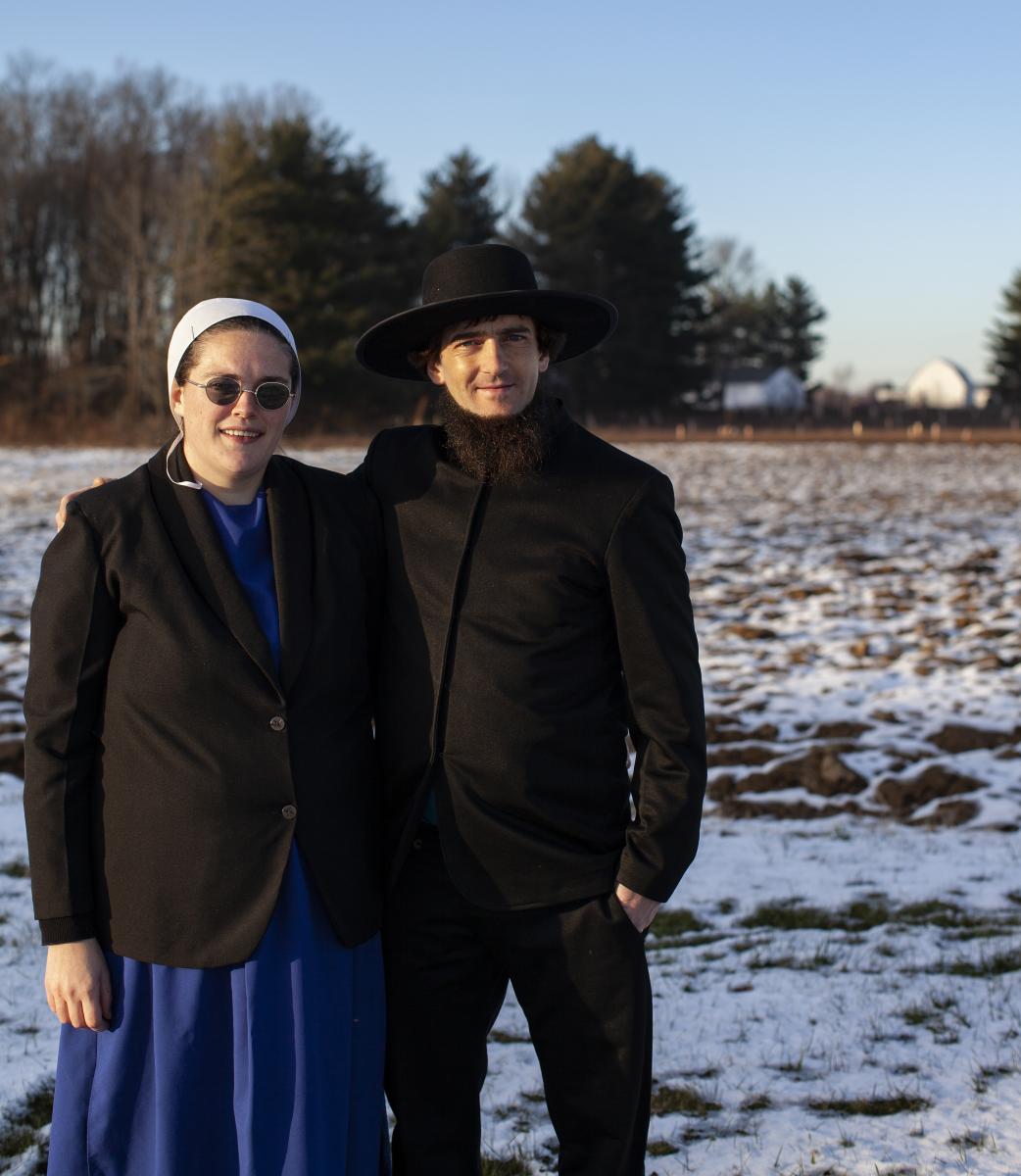 Yet, while there was a lot of stress in leaving everything behind, Delila notes that today she has half the stress than she did back then. Says Delila, “I have so much peace knowing that I can come to God as I am and be accepted!”
Yet, while there was a lot of stress in leaving everything behind, Delila notes that today she has half the stress than she did back then. Says Delila, “I have so much peace knowing that I can come to God as I am and be accepted!”
Life is not worry-free for the Glicks. Leaving the Amish also meant leaving behind John’s profitable construction business, as his former Amish customers and workers can no longer do business with or work for him. Business on the outside is very different, and John struggles to figure out how to run a business and pay people regular outside wages.
Among all the new things John and Delila are learning, the most important is reliance on God. Notes Delila, “Being Amish, you aren’t really taught anything about trusting God. It’s all about traditions and rules and just doing what you are told. After we first left, there was a weight on our shoulders—from our own salvation to making ends meet. But after we started open prayer—not just praying from the Amish prayer book—our entire outlook changed. We started trusting God that He would lead us. He has, and we know He will continue to do so!”
Andy's JourneyThe turning point of Weaver's life came several years before worshipping with the Glicks. In reading the book, The Martyr's Mirror, a compilation of stories of Anabaptists who were persecuted for their faith, Weaver was startled to realize that the same arguments that had been used to persecute the early Anabaptist martyrs were now being used to persecute members of his community who broke the church rules, including things as innocuous-sounding as having a hat of the wrong brim-size. Determined to bring revival and change to the Amish church, Weaver launched a mission to read as many Christian books from other denominations as he could.
 A providential encounter with a Seventh-day Adventist at an Amish barn-raising led to his first encounter with Adventist literature. Like many other Amish, the book of Revelation fascinated and troubled Weaver, especially when trying to read it in his German Bible. But upon reading an Adventist commentary of Daniel and Revelation, he was ecstatic to discover that all the answers he was looking for were in the Bible. Before this, he had no idea that the Bible explained itself. However, it was Ellen White’s classic, The Desire of Ages, that truly converted him. Within those pages, Weaver first grasped the concept of righteousness by faith.
A providential encounter with a Seventh-day Adventist at an Amish barn-raising led to his first encounter with Adventist literature. Like many other Amish, the book of Revelation fascinated and troubled Weaver, especially when trying to read it in his German Bible. But upon reading an Adventist commentary of Daniel and Revelation, he was ecstatic to discover that all the answers he was looking for were in the Bible. Before this, he had no idea that the Bible explained itself. However, it was Ellen White’s classic, The Desire of Ages, that truly converted him. Within those pages, Weaver first grasped the concept of righteousness by faith.
Weaver knew that while the Amish could look “pure” on the outside, they have their share of moral issues and dysfunction. While some sins were brought to the bishop during ritualistic confessions, many more by laity and clergy, including accusations of sexual assault and incest, were conveniently avoided or never dealt with fully. Beneath their broad-brimmed hats and hand-spun clothes lay a crushing burden of guilt, shame and despair. They believed that not only would they have to pay for their own sins, but there was no way they could become holy on their own. When Weaver discovered that Christ had both lived the perfect life and died the perfect sacrifice in his place, and that through a relationship of faith in Him, he could be both justified and sanctified, it was an unbelievably liberating experience.
Weaver went on to read the fundamental beliefs of the Adventist Church and was convinced that it all aligned with the Bible. “It was as plain as the broadside of my barn,” he says. “Everything in there was true.”
Subsequent conversations with his Amish leaders led to the inevitable Bann of his family from their Amish church, family and community.With no access to their usual Amish bulk food stores and eight children to feed, there were some hungry days, but Andy and his wife were determined to follow their newfound truth, despite the consequences.
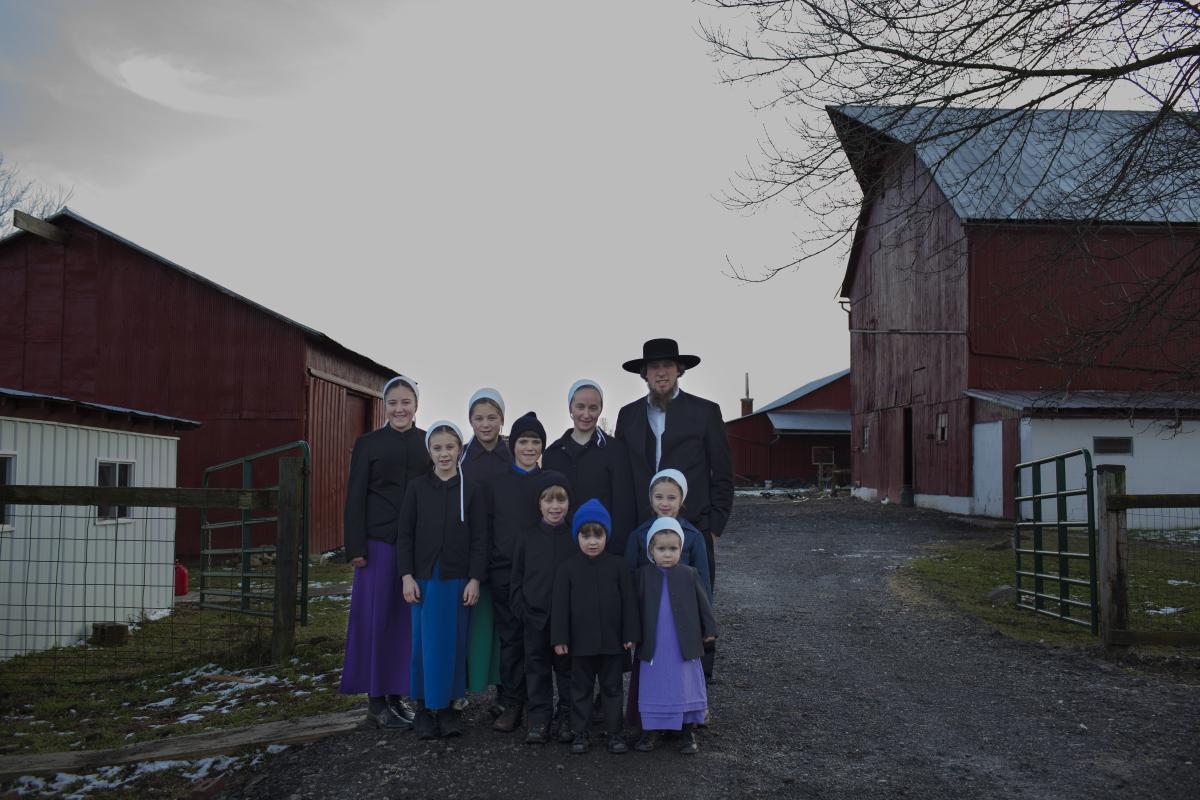 Weaver’s first visit to an Adventist church, however, threatened his resolve. The culture shock going from an Amish worship experience to an Adventist one was severe enough to tempt him to return. Discouraged, he prayed, “Lord, I believe this church has the truth. If it is your will, help me to start an Amish Adventist church where we can reach out to the Amish people. We can keep our lifestyle and dress and sing our German songs, but we will teach the Word of God.” Weaver knew that his newfound faith should pose no threat to the simple Amish lifestyle, and that once shown the truth, the Amish would be as committed to it as they were to other aspects of their lives.
Weaver’s first visit to an Adventist church, however, threatened his resolve. The culture shock going from an Amish worship experience to an Adventist one was severe enough to tempt him to return. Discouraged, he prayed, “Lord, I believe this church has the truth. If it is your will, help me to start an Amish Adventist church where we can reach out to the Amish people. We can keep our lifestyle and dress and sing our German songs, but we will teach the Word of God.” Weaver knew that his newfound faith should pose no threat to the simple Amish lifestyle, and that once shown the truth, the Amish would be as committed to it as they were to other aspects of their lives.
It wasn’t long before God made Weaver’s vision a reality. With the help of some Adventist friends, he obtained nearby property, and the Ohio Conference’s West Salem Mission was formally opened. Today, about 50 former Amish and Mennonite believers congregate there every Sabbath to worship and fellowship together. Members reached some through friendship evangelism, while others, already disillusioned with the Amish religion, also joined the church.
The Raber Brothers' JourneyVernon Raber moved to Florida at the age of 20, in an effort to get as far away from his Amish upbringing as possible. Being overweight as a child, Raber had been ruthlessly mocked by his Amish schoolmates and church peers and wanted to escape as soon as he could.
Florida brought its own share of challenges, however, and Raber found himself embroiled in drugs and alcohol. He moved back to Ohio, but decided to attend a Mennonite church instead.
 Several years later, Raber’s mother passed away. Having been taught all his life that when someone died, they went straight to heaven or hell, he couldn’t help but wonder if his mother had made it to heaven. The mental picture of his mother screaming and writhing in the eternal fires of hell almost drove him out of his mind. With subsequent deaths in his family, the mystery of death kept gnawing at Raber and led him to begin searching for answers.
Several years later, Raber’s mother passed away. Having been taught all his life that when someone died, they went straight to heaven or hell, he couldn’t help but wonder if his mother had made it to heaven. The mental picture of his mother screaming and writhing in the eternal fires of hell almost drove him out of his mind. With subsequent deaths in his family, the mystery of death kept gnawing at Raber and led him to begin searching for answers.
Around this time, his brother Abe discovered Adventist sermons on YouTube and began sharing them with Vernon. When Vernon discovered that the Bible did not teach an eternally-burning hell, but a swift, just punishment after the close of time, his sense of relief was indescribable.
Then after learning on YouTube about West Salem Mission, Abe asked Vernon to drive him there. Vernon was happy to oblige. The moment Vernon walked into the worship service, he was awash with a strong sense that this was where he was supposed to be.
As a devoted steak-eater, the only thing he did not like was the after-church potluck. “Man, that vegetarian food is awful,” he complained to Abe after their first visit. Now, one year later, not only is the potluck fellowship one of his favorite things about the church, he has lost more than 30 pounds by following the Adventist health message.
“I used to dread going to church,” shares Vernon. “Even when I was attending the Mennonite church, it was always a toss-up between going to church or Bob Evans [restaurant], and often Bob Evans would win out. Now going to West Salem, I can’t wait for Sabbath to come so I can go! It’s been an education like I’ve never had in my life.”
Abe agrees. Growing up, “I was taught it was keeping church rules that saved me, and if I sinned, I would just have to confess it to my bishop. Since becoming acquainted with Adventists and studying the Bible for myself, the best thing I’ve learned is to have a real relationship with Jesus Christ, and that is what really saves,” he says.
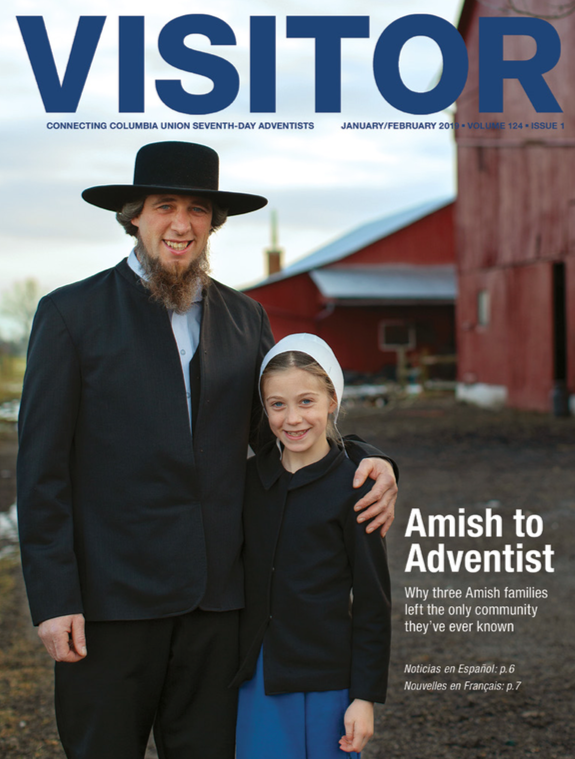 Read these articles from the January/February 2019 Visitor:
Read these articles from the January/February 2019 Visitor:
- Editorial: Seek First to Understand
- Feature: Amish to Adventist
- Amish Fact or Fiction
- Journey to Adventism
- How Diverse is the Columbia Union?
- Book Release: Children Are Gifts
- Children Illustrate 2019 Calendar
- Niños Ilustran el Calendario 2019
- Le CURF va rembourser 3,2 millions de dollars aux fédérations
- CURF devuelve $3.2 Milliones a las conferencias

Comments
God Bless
Thank you for this article. I really enjoyed it! God is amazing. It warms my heart to hear how He works
Thanks!
Thank you so much! God is amazing!
Best, Michelle Bernard
Add new comment